These Boots Weren't Made for Cycling… But with Some DIY, They Could Be!
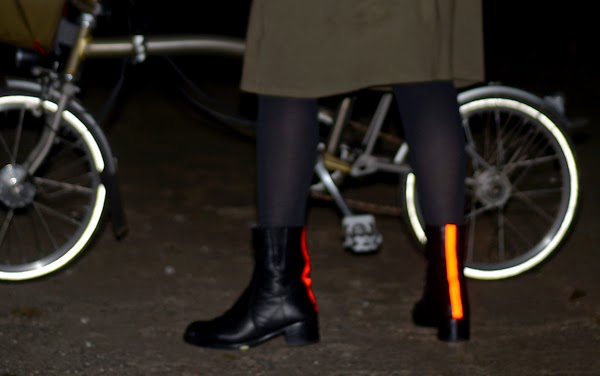
While the extreme view among plain-clothes transportation cyclists is that there is no need for cycling-specific footwear, personally I wouldn't go that far. After all, those who do a lot of walking as part of their daily routine (as opposed to driving everywhere) will look for walking-friendly features in their footwear - be that footwear work boots or high heels. Similarly, it makes sense that those of us who pedal around for transportation will gravitate toward shoes that are bicycle-friendly. Typically such shoes will be constructed with non-slip, reasonably stiff soles. For commuting in the rain, waterproof uppers are also essential. And some riders find reflective elements desirable. We can find these features in shoes marketed as cycling-specific. We can also look for ordinary shoes that happen to offer these same features. Finally, we can take matters into our own hands and add the features ourselves!
Let's say, for instance, that you own these ordinary 2" heel ankle boots. They are durable and versatile, they can be worn with trousers and skirts, they can be funkified or frumpified as the situation requires - In short, you love them. But now you've started riding a bike for transportation, and oh no! You find that the soles slip on the pedals.
But don't despair. Because you can resole your favourite boots with non-slip soles. Most cobblers offer this as a same-day service, and last time I checked, the cost in the US was between $10 and $30 per pair, depending on cobbler and the type of sole you choose. When getting this done, make sure to communicate to the cobbler that you need the shoes to be grippy and stiff, for cycling; they usually have lots of options and will be able to offer suggestions. Getting your shoes resoled can turn any slippery shoe into a cycling shoe. So now there you are, pedaling happily in your resoled-boots until is tarts to rain and oh no! Your feet are completely soaked by the time you get to work.
But take heart! Because if your shoes or boots are not already waterproof, you can waterproof them yourself. A variety of fairly inexpensive sprays and rub-on waxes now exist that are suitable for fabric, leather and suede. This one costs around $4 and will last for some time.
So there you are, having waterproofed your favourite boots, rolling along in the sunshine and in the rain, perfectly content ...Until you spot another cyclist in front of you. And you notice that this other cyclist has reflective thingamajigs on their shoes! No doubt these are some fancy cycling-specific shoes that cost a fortune. How else would you get super-cool reflective thingamajigs like that?
Oh how indeed! If you are not acquainted already, allow me to introduce you to 3M reflective tape. It costs about $1 per small roll and comes in different colours. Red seems like a good choice for reflective bits on the backs of shoes.
Depending on how permanently and securely you want to attach it, you can get reflective tape that is sticky (shown here), or reflective ribbon that needs to be sewn on (a local cobbler quoted me £10 for the work). How much of it you want to attach and where is of course up to you. You can tape it around the heel. You can add a tab to the top of the shaft. Or you can run it along the rear seam as shown here, for dramatic effect.
And though I did this just to illustrate a point (readers sometimes ask where to buy shoes with reflective bits at the back, to which I reply suggesting they could add those themselves, but they seem skeptical), I actually quite like the Prada-like result. Even in daylight they are noticeable.
And in the dark?
Well, you can see for yourself.
I think it's great that footwear manufacturers, both within the bicycle industry and outside of it, are addressing the needs of utility cyclists who prefer to ride in ordinary shoes, but would like those shoes to have bicycle-friendly features. And it's equally great that, with just a little creativity and spare cash, we can turn almost any existing pair of shoes into shoes that feel great on the bike, if they don't already. Whatever your your choice of footwear, happy pedaling!

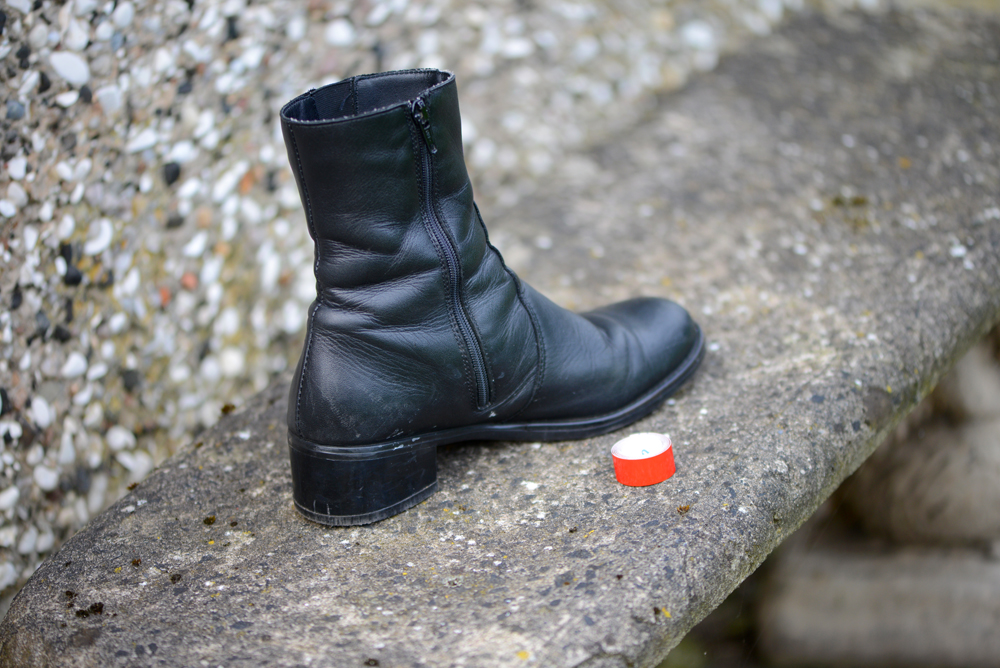
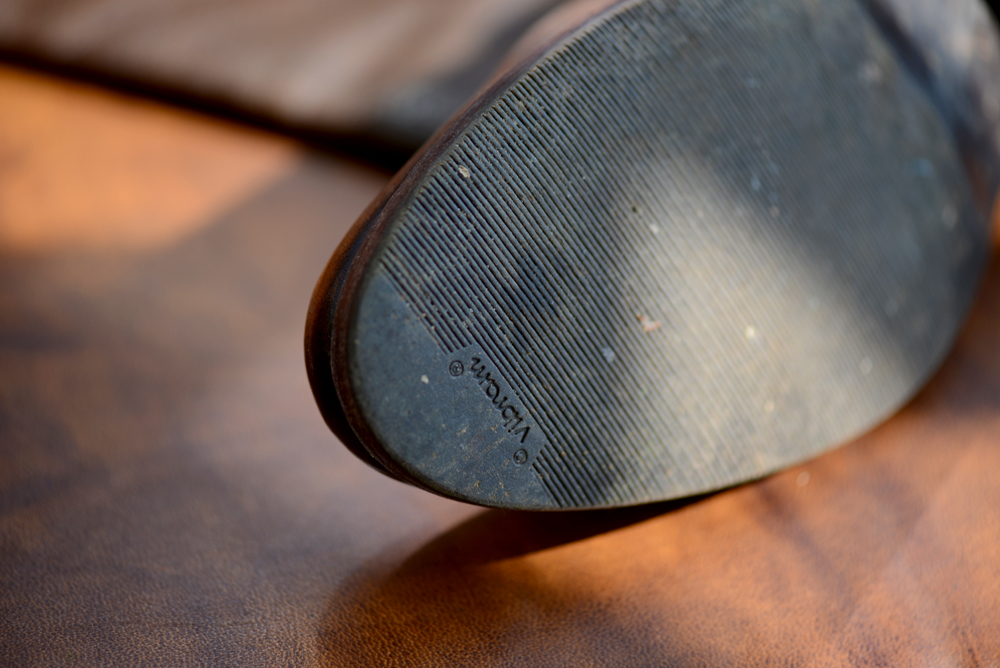
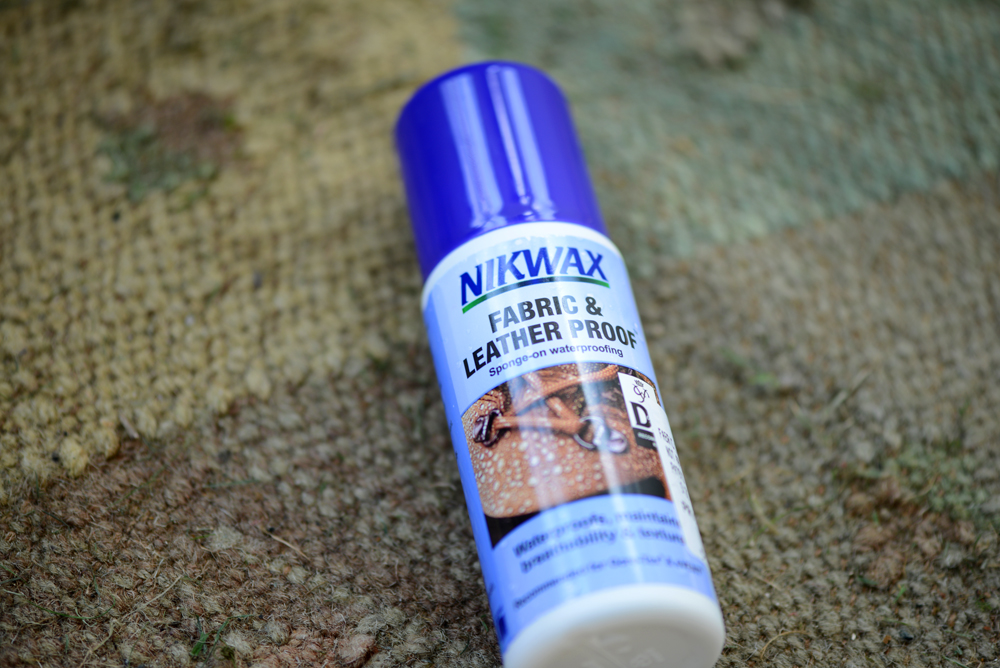
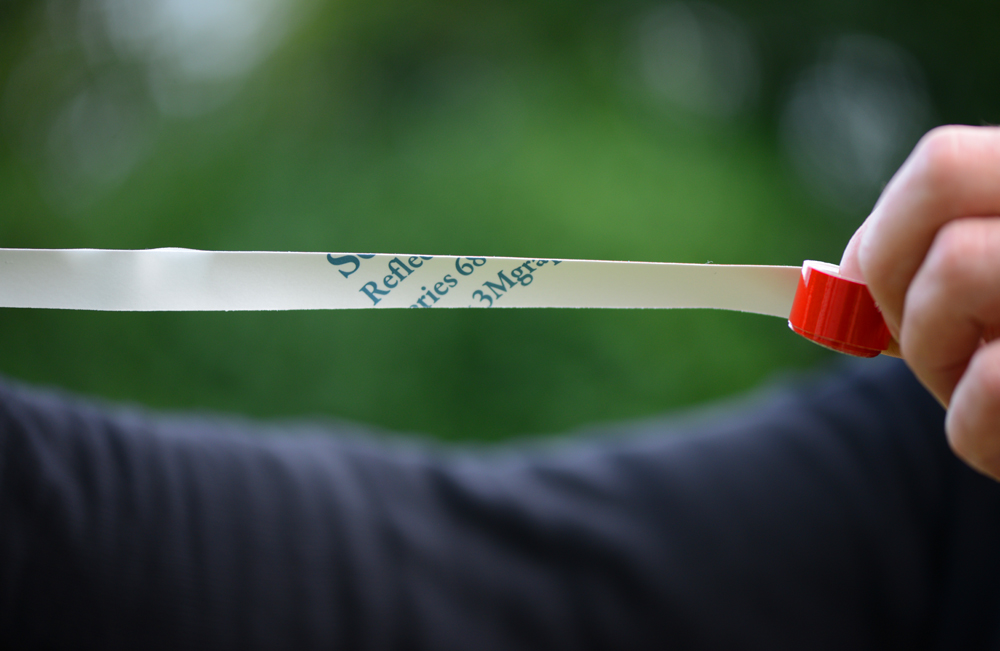
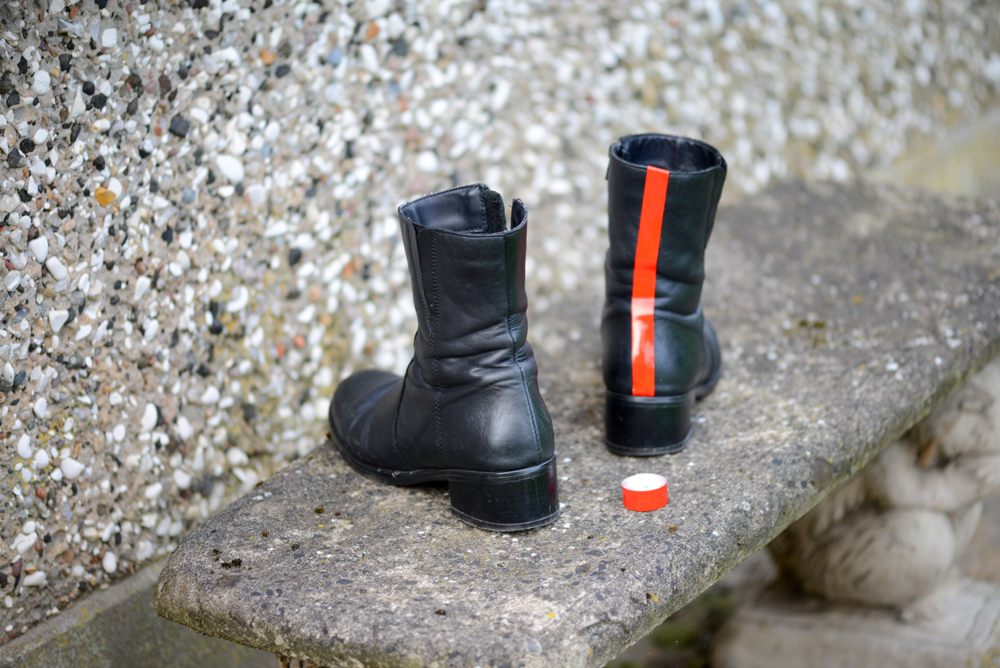
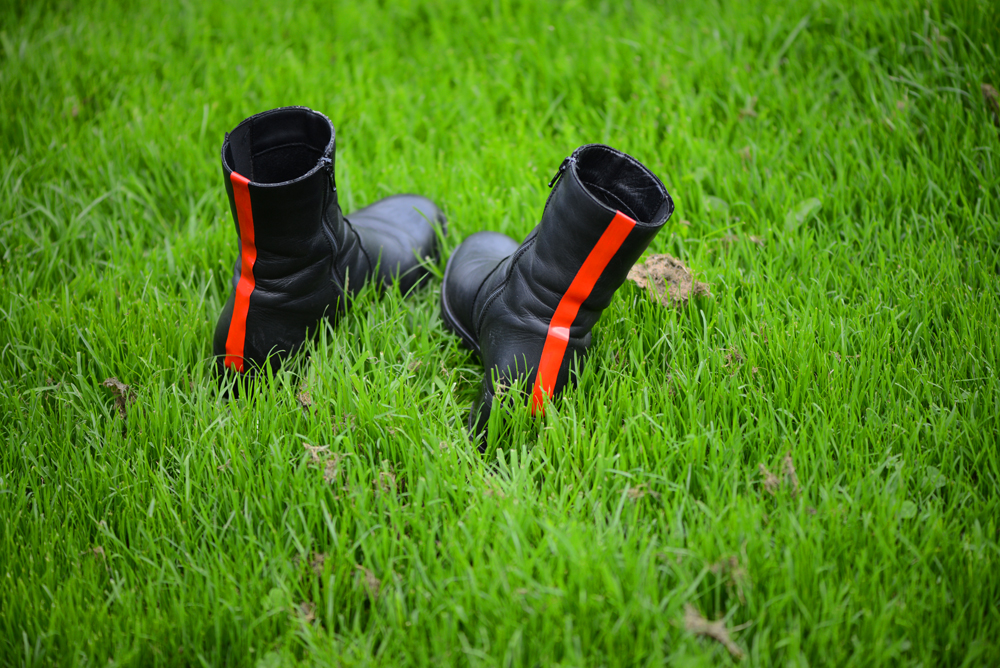
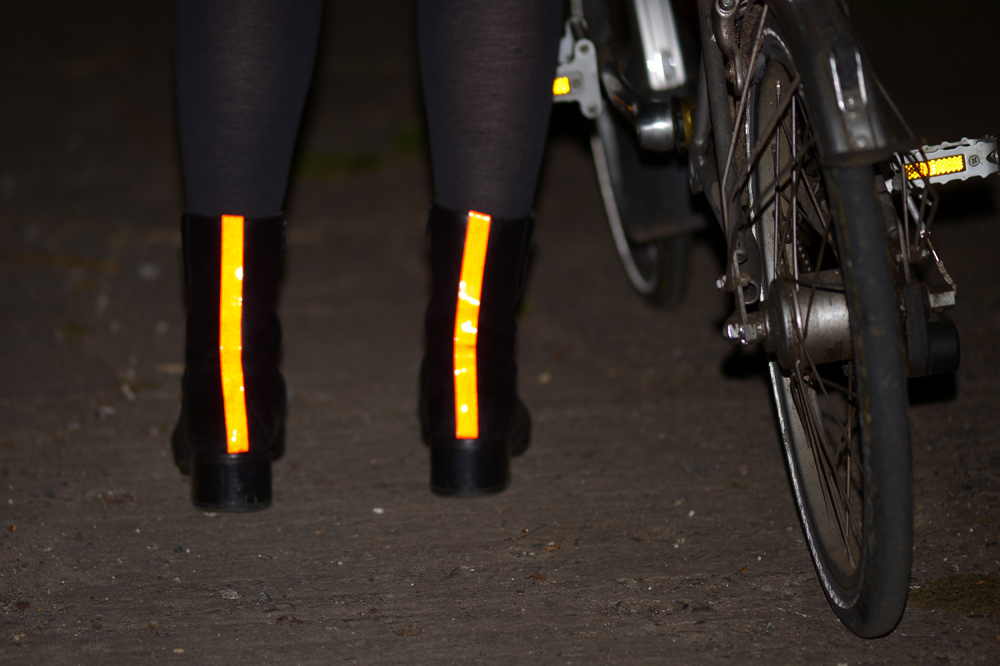
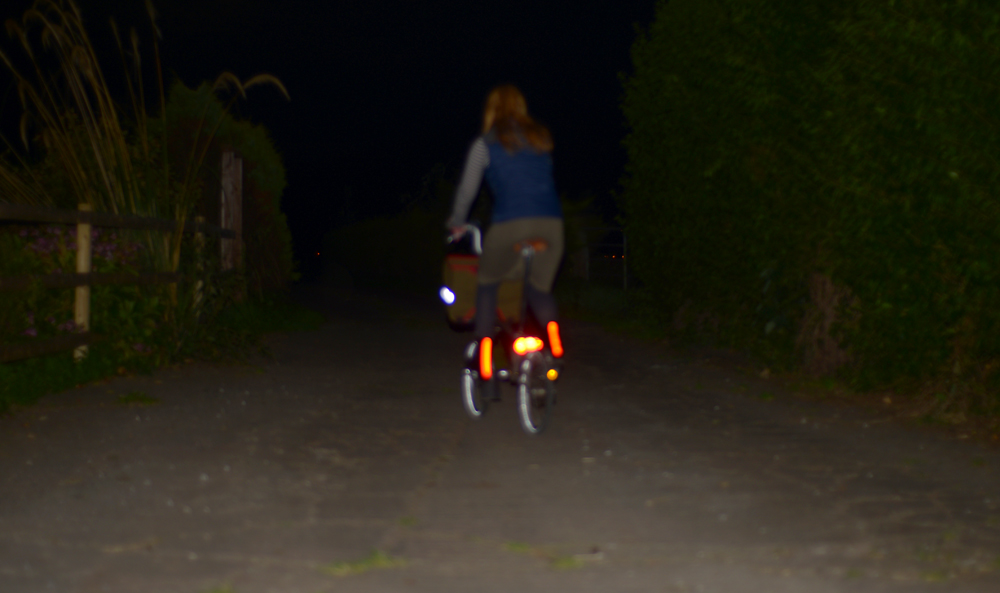
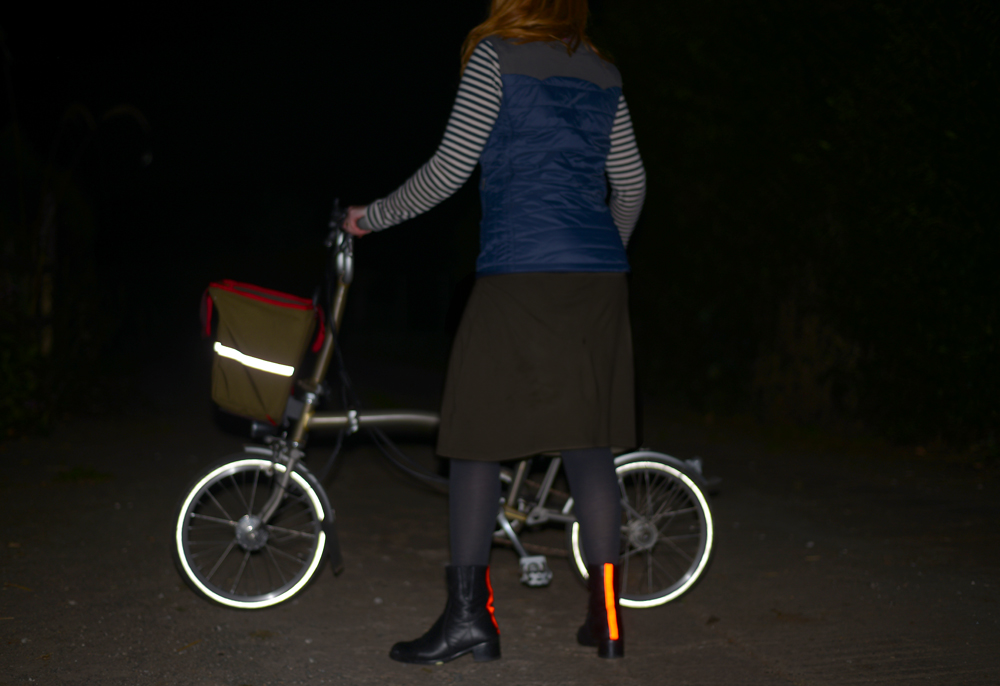
You can also choose tape colors so it blends in with your shoes during the day and only stands out at night. It's nice for amping up your bike's reflectivity, too.
ReplyDeleteIf you want to go the other way, and get cleated shoes that look more or less like regular shoes (my own choice), this is useful: http://antranik.org/the-practical-guide-to-casual-and-stylish-looking-clipless-shoes/.
That's a good post. I wouldn't mind me some clipless "normal looking shoes." But the problem I have with most of them, is that they are too sporty looking for what I'd normally wear. Might as well be wearing the actual clipless shoes I use for roadcycling, which are all-black and subtle enough to pass for sneakers.
DeleteThey're out there but ultimately if I'm going to be wearing casual shoes after transporting myself via bike, I'm happy just cycling in them. Those casual clipless shoes aren't cheap!
DeleteI'm borrowing the word frumpified!
ReplyDeleteYou are welcome to it, and I particularly recommend it in this context (sound may be NSFW).
DeleteI hadn't thought of using red reflective tape. Those boots look like they belong on a runway (for now, while designers still have their senses and aren't promoting 7" heels)!
ReplyDeleteAll the girls here are wearing 7" heels these days. I max out at 4.
DeleteAnybody stateside have a link for this particular kind of red tape? It's gorgeous.
ReplyDeleteResoling costs and time are much more than $10-30 and a day's wait. The sole itself my cost that much but with labor it's more like $70-100. I ride with my boots all the time. I love my boots. Resoling them happens every couple years and they've lasted many, many years.
ReplyDeleteHm you must go to a fancier place than I. Either that or prices in the US rose dramatically since I last had this done.
DeleteI go to the cheapest I can find, but it could be there's a difference in this process for women's shoes.
DeleteI know this blog is about high end and hand made and supporting that cause. A living wage here requires at least $20 an hour for labor and those who set up shop to do such things deserve it. If one has a shoe or boot of the quality that can be resoled it makes sense they'd want a good materiel along with the craftsmanship. This isn't cheap. Give me the name of your place and I'll ship my shoes there. :)
DeleteHa! I can't get a flat tire fixed for under $20 at my LBS and that's only a ten minute repair which still requires I wait in the queue. You've found some cheap labor and materials in your neck of the woods! If slipping is an issue one might try those grippit straps you used to use. They should be cheap.
DeleteI resole mine every 2 years as well; the soles last far longer than those that originally come with the shoes. As far as price, I think it depends on quite a lot - including on neighbourhood and on when the cobbler bought his supply of soles. In Cambridge MA there are 2 well known excellent cobblers, one nearly twice as expensive as the other with the quality difference negligible (in my opinion), but location and mystique/trendiness playing a big role.
DeleteWho's the cobbler who provides more bang for the buck? Curious to see if it's the cobbler I go to along Prospect St (name escapes me at the moment).
DeleteDon't want to turn this into a review of local cobblers, but email me privately if you like. I'm just back in Boston and tempted now to check whether prices have changed since last time I had this done.
DeleteI walk a lot and cycle daily. After many years of experimentation I have found that supple soles, and no heel ie, as close to wearing nothing is the best way to allow your feet to regain their intelligence and strength. There are some blogs that I found that advocate this natural (and somewhat obvious) approach to walking but it works equally well with cycling as long as the pedal platform is big enough.
ReplyDeleteI now use VO sabot pedals which I have modified by drilling and tapping the outside edge for extra studs and replacing all the original M4 studs with M4 grub screws machined to give more "bite" into the sole. THis arrangement allows complete grip wet or dry at any angle - almost vertical when pedalling out of the saddle is possible.
The ability to lift the feet and slightly adjust the position as the feet want is the reason I stopped using clip-less pedals. I drank the powerful clip-less kool-aid some years ago but my feet were smarter than me and kept telling me they hated being clapped in irons and immobilised!
Anon. Sch.
I agree - grippy pedals and supple shoes - your feet are responsive - I never use any form of 'shackles' - riding is about freedom :)
DeleteI have several pairs of http://www.ssbd.com.au/ shoes. Excellent.
ReplyDeleteThose high tops are very pretty and they even have size 38. Will close that browser window now!
DeleteMy experience with those who bicycle for transportation are that they are high on the DIY scale. Most have had to find solutions to things needed yet not easily found in bicycle stores. They are a creative and resourceful type. Your suggestions echo what has been been done for a long time. Best. S.
ReplyDeleteKeen Santiagos and MKS RMX pedals have been the ideal combination for commuting and rides up to 60-70 miles for the last two years. The shoes are no longer made (of course... anything good gets discontinued in short order: I've lost track of all the "perfect" cycling items I've found over the years that can no longer be obtained), but maybe Maderas will work.
ReplyDeleteI wish there were such a thing as an ordinary shoe. How many does the average person have in their closet? Seems six of one and a half dozen of the other. Either spend some time and money to alter a pair or two of your favorites, or just have a cycling shoe and carry the others to the place one is going. Of course this get more complicated if one has multiple bikes with a variety of pedals…a vicious circle. I'm all for keeping it simple ;)
ReplyDeleteThe 'Hush Puppy Body Shoe' is a range of shoes I find great for cycling and 'normal 'wear' - and then as you suggest, it is possible to carry another pair of shoes if required. Yes, keep it simple.
DeleteI don't do well with too many pairs of shoes. Typically every season I will have 2 pairs that I wear constantly, with a few more novelty pairs lying around for special occasions. Any more than that and it gets confusing. Besides, I would rather collect bikes...
DeleteYes, two pairs per season is right for me also, I think numerous shoes just take up space and are unnecessary. I love bikes but have only one - I've only ever had one bike at a time.
DeleteI've never had any success with the various waterproofing products for my boots. In fact, it was always a bit more frustrating when, in a downpour, I felt the water seeping through the seams. Now I just figure my feet will get wet so I wear wool socks. My feet are happier and my boots can deal with the wet on their own.
ReplyDeleteI wouldn't be caught dead in those boots.
ReplyDeleteI've long toyed with the idea of attaching SPD cleats to a pair of Florsheim Imperials (my father used to wear those, so I have a sort of compulsive interest in them, though I wouldn't be caught dead in those, either).
Slightly more seriously, I found that MKS GR-9 pedals, with a flat surface and used with semi-tight clips and straps, are wonderful for normal-shoe cycling; in my own case I preferred Timberland or similar boat shoes, or "safari boots' for colder weather. The pedal's large, flat surface is smooth for easy entry -- the pedals have a little tab to help you flip them into position -- and the strap, kept just loose enough to accept the shoe, keeps your foot in place.
As for waterproofing, after living in Quebec City for several years, where at the end of winter (July) you end up walking through 18" deep slush puddles over ice-clogged street drains, I found that Mink Oil or Dubbin, liberally applied and lovingly worked into the leather, keeps even nice Fry boots waterproof.
It looks ghetto, but functional, not that there's anything wrong with that. Lovely? Nope.
ReplyDeleteI just hate it when it tarts to rain. ;) All those tarts falling from the sky. Kidding aside it's a wonderful post. :)
ReplyDeleteThis was after the queen made them on a summer day.
DeleteThe best part of this trick is that the reflective material moves when you're pedaling, which makes you much more visible. That said, I still prefer larger swathes of bright and reflective material, so I always wear construction vests when I ride. I buy them a size larger than I normally wear so I can slip one on over whatever I want to be wearing at my destination, which is never a neon-yellow jacket made specifically for cycling.
ReplyDeleteYou can get vests like this from places that sell reflective gear for construction. (I've used safetydepot.com, but there are many other online retailers.) They're a lot cheaper than reflective vests sold in bike shops, they're made of sturdier material, they have much more reflective tape, they zip, and some have pockets. Get class 3 vests, which provide the best visibility.
They can get a little gamey after a few sweaty rides, so I have a couple, which allows me to have one in the wash. The sleeveless version is better in warm weather; they're made of mesh, but they still insulate a little. In cooler weather, though, I prefer the half-sleeved version because when I raise my arm to signal a turn, the sleeve is more visible than whatever else I'm wearing.
Reminds me of this horrifically 70's UK public information film that has scorched itself into my brain all these years... www.youtube.com/watch?v=1MFuSMz1zh0
ReplyDeletelove these!
ReplyDelete